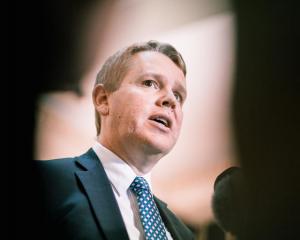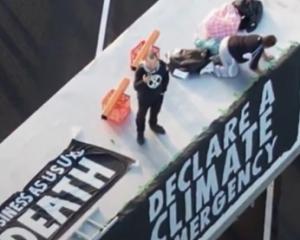A major meat processor is stepping up its Net Carbon Zero programme to include lamb and venison.
Silver Fern Farms (SFF) launched net carbon zero beef into United States supermarkets this year.
Woody vegetation growing on farm is used as an "inset" to remove the beef product’s emissions from the animals being raised, through to the processing of their meat, and even customers disposing of packaging in market.
Some farmers directly supplying cattle into the programme — including South Island early adopters — are being rewarded with separate payments of $50 a tonne to recognise carbon sequestered, on top of the meat price.
SFF has not set a firm date, but hopes to introduce lamb by early next year and has more than 100 farmers going through the process to be involved in the programme.
Upper South Island livestock manager Ged Rawcliffe said they had begun talking to farmers about bringing in lamb and venison into the programme after a successful start with beef.
This would initially begin with farmer shareholders as the company preferred to reward committed suppliers, he said.
"Currently it’s beef and we will scale it up with lamb and venison and that might mean we are looking for a bigger pool of carbon to balance the emissions from those lamb and venison products. [The cattle’s] been going well. We’ve got the ability to balance the emissions occurring from production by paying directly for the job that woody vegetation is doing to remove the equivalent amount of CO2 to match to the product sold, now it’s just looking for scale for the programme and spreading it across the species."
He said cattle farmers understood the need and wanted to be part of net carbon-zero.
Farmer suppliers have their farms mapped to measure woody vegetation such as shelter belts and regenerating native bush. Their overall carbon is calculated and put into a pool to enable the total emissions from product sold to be balanced by vegetation actively absorbing CO2 on those group of farms.
As part of the 100% standard angus programme, they must meet grass-fed criteria and have cattle free of antibiotics.
Mr Rawcliffe said net carbon zero had been positive for SFF’s profile and suppliers saw them leading in a space at a time when legislation was being stepped up to put a price on livestock emissions.
"We are looking at opportunities to position them to take advantage of that rather than feeling like everything is coming at speed and being forced on them as a cost."
Mr Rawcliffe said SFF could provide an avenue if the Government’s proposed changes to He Waka Eke Noa ended up excluding vegetation being recognised as absorbing CO2.
"Farmers have been actively increasing vegetation and putting in riparian planting and large stands for a number of years now, so for my mind it’s really great that they can be recognised for that."
They had been carrying out this work because it was the right thing to do and probably without thought of an end customer, but now there was a link, he said.
Meanwhile, SFF has echoed Beef +Lamb NZ indications that high prices for lamb at about $9 a kilogram could come off the boil in the lead up to Christmas as world customers feel inflationary pressure.
He said it was not unusual for some realignment in prices at this time of the year, but there was some risk of it going further for lamb and sheepmeat.
Venison remained stable after a lot of marketing work, he said.
A wet winter and cold spring has delayed the start of new lamb processing by about 10 days, but lamb numbers appear to be up in the top half of the South Island.
Many farmers from Oamaru to Nelson have more lambs on the ground from higher ewe scannings after a good summer and autumn and high lamb survivability through the winter.
Mr Rawcliffe said processing delays through late autumn and early winter have mostly been caught up for cattle and sheepmeat flows.
TIM.CRONSHAW@alliedpress.co.nz














